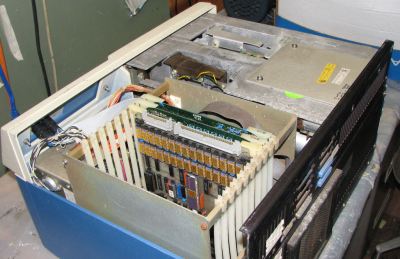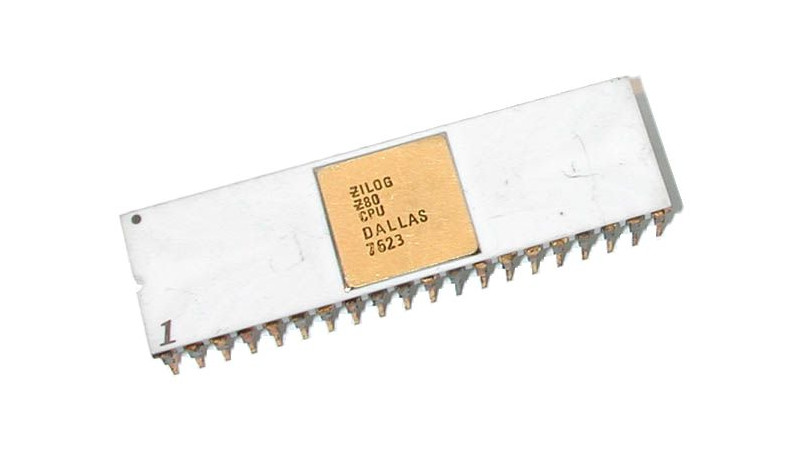When it comes to famous operating systems for the Z80 and similar Zilog processors, the first and maybe only one to come to mind is CP/M, which was even made its presence known on the dual-CPU (8502 and Z80) Commodore 128. Yet Zilog also developed its own operating system, in the form of the comprehensively titled Z80 Operating System with Relocatable Modules and I/O Management (Z80-RIO for short). With limited documentation having survived, [Ralf-Peter Nerlich] has set out to retain and recover what information he can on RIO and the associated Programming Language Zilog (PLZ) after working with these systems himself when they were new.

Perhaps unsurprisingly, neither Z80-RIO nor PLZ were targeting the regular consumer market when they were brought to market in the late 1970s, but were part of Zilog’s focus on industrial markets, as well as laboratories and elsewhere that could benefit from a versatile, programmable computer system for control and automation.
As part of an integrated hardware/software solution, Zilog released a series of computer systems, such as the MCZ 1/20 of which a number of examples survive today. Herb Johnson’s collection and restoration projects provide a good overview of not only the base systems, but also the expansion cards available for these systems. Right along with the Z80-RIO OS providing the ability to customize the system for the target usage, the underlying hardware could also be configured with just the expansion boards required, or conceivably even custom boards.
Of course, it doesn’t take many guesses to figure out what happened to Z80’s RIO OS and related, with the 1980s heralding massive shifts in the computer markets. Although now functionally obsolete for decades, it’s good to see such preservation efforts of 1970s computing systems and related software. These are after all the foundations on which modern day computing is built.
(Thanks to [Stephen Walters] for the tip)

















8502 ?…
what about it?
https://en.wikipedia.org/wiki/MOS_Technology_8502
https://en.wikipedia.org/wiki/MOS_Technology_8502
That was a typo. It is MOS 6502, of course. I still have a working Commodore 128D.
That wiki link says the C128 uses the 8502 chip. It’s an 6502 instruction set chip but called 8502. So this doesn’t appear to be a (obvious) typo.
8051 ? Duh…
The Commodore 128 does, indeed, use the 8502. (Eighty-Five Oh-Two is not a typo.) ;) It works with the Z80, sharing the Address & Data busses as well as peripherals. This gave the C128 the ability to run CP/M as well as Commodore and 6502 code.
https://retrocomputing.stackexchange.com/a/12641
A typo obviously. 6502. MOS Technology.
Unsend…
DuckDuckGo is your friend.
When I was a young guy, I had a nice head of hair, then the Z80 came along and I pulled out all my hair trying to master the Assembly Language programming. There can’t be many guys that when they look in the mirror and upon seeing their bald pate, automatically think of the Zilog company and their Z80!
I didn’t think it was that hard, I took to it like a fish to water. Could write that stuff without manuals (mostly…). I was doing most by hand, and keying in, in hex code, so I guess I was a bit more involved with it (plus, being younger, my brain was more like a sponge, now it’s spongy).
Those days I wrote code in hex to 6502, Z80 and 8051 even in the same day and fortran for pdp-11 in the evening.
I even wrote an 256 byte bootloader for X80 and a 256 byte graphics packet for C64.
Those were the days :)
agreed I came into z80 in 1979 to write a z80 based rtos for a multibus/multiprocessor system being delivered to FEDEX in memphis by lear siegler in Grand Rapids, bought an SD systems starter kit cause of all the Z80 family of chips we were using at work and used that to hand assemble and enter each line of machine code on the hex keyboard and test.. 1 month later I invested in a tekelek Z80 family S100 boards and a 22 slot S100 backplane with a z19 kit terminal to access, all soldering for the computer backplane and Z19 completed in 24 hours of madness and powered up first time, then it was time for writing complete assembly routines with ED with both CPM 1.4 and 2.2 and MPM 1.0 wheeee) at work we used a UCSD p-system as our development cross system and then used a HP 1611 logic analyzer to debug the z80 target code…
the z80-sio initialization ate our lunch for a week before one of our devs figured out to apply a reset after each register set to make everything function…
what a time
I remember it fondly
i MISS the fun of Z80 days
This was my first project after abandoning the fun world of 370 MVS /370VM systems
programming
I should have mentioned this system controlled all the conveyers used at that time in Memphis in real time for sorting and routing packages
Remember ZDOS and plz/SYS?
Z-DOS was a 8088 OS. It was MS-DOS adapted for the Zenith Z-100. No relation to Zilog or the Z80 other than the initial letter, as far as I know.
ZDOS was the Disk OS portion of the Zilog OS (RIO) from 1977 ish vintage. I worked for Charlie (Bass) in the Zilog Software team on Bubb Road, back in the day.
When I first started working at Zilog in 1988 (as a backend maintenance technician) I had to clear an entire closet full of Z80-rio documentation to make room for DEC VAC PDP11s and associated hardware. Now I wish I would have kept some of it.
Are you sure it wasn’t the poor radiation shielding on your monitor…?
It’s a nice forgotten system. A couple of years ago, I wrote a crude MCZ-1 emulator to be able to boot the RIO disks and have an idea of how it was. https://github.com/ivanizag/izilogmcz
Never heard of this one. I’ll bet it was to compete with the intel MDS development system running RMX-80, not for the retail market. Gads, there were certainly other operating systems back then for the Z-80. TRSDOS or HDOS anyone?
I haven’t forgotten. Thanks for ignoring bitsavers
http://bitsavers.org/bits/Zilog
http://bitsavers.org/pdf/zilog/mcz-1
Hi Al! We’re definitely not ignoring you. The tireless work you do makes many of these projects possible. I find myself on sites like bitsavers or the internet archive several times a week. [Maya] was reporting on [Ralf-Peter’s] work here. He links to bitsavers on his resources page: https://rio.early8bitz.de/index.htm.
Thank you again for keeping the scanners humming!
-Adam (Community Editor here at Hackaday)
And there was MSX-DOS…
The Zilog Z-80 was an improvement on the Intel 8080, with an expanded command set. It could run as an 8080, or could run OSs that were developed to take advantage of the additional architecture. One of those was CDOS, which ran on the Z-80 / S-100 based Cromemco. I had a Z2D (with 2 Shugart 8″ floppies) and I still have a Cromemco One luggable, which I used in my business in the 80s, along with a Z-80 based Kaypro 2 luggable, which I also still have, and i still have a Commodore Executive 64 luggable (see a theme, here?). I also still have a TRS-80 Model 100 slab. These are all retired, as sm I, and now most of my work is done on either a netbook or an Android phone. And the 8502 is an actual processor, not a typo; it was used in the C64 and C128 to address additional RAM.
An additional note, my first computer was a mechanical analog system made by Keuffel & Esser, Model log-log Decitrig Duplex, which I also still have, and still occasionally use; I love it for computing ratios and proportions, and for solving trig problems, and I just like to keep in practice with it.
There was a company in Red Bank NJ that operated his business off of a rubric Sinclare that ran CPM
He built an interface for an Apple Floppy drive
I know a place that still runs z80’s in a couple hundred machines….
Zilog still has all the documentation in their secure Library.
Where is this library located? I have a couple MCZ systems, and several boards for which I’ve not been able to find manuals.
In a discussion about the Z80, I was remembering a story from long ago.
Someone I knew had a running ZDOS system, which ran on Zilog hardware.
For reasons that I don’t know, happened to have another system
with similar hardware, but not sold to run ZDOS.
One day, as a test, he put the ZDOS floppy into the other system.
Instead of the expected effect, he got the message:
“Hardware error, call Zilog”.
Search through the ZDOS disk find no such message
anywhere on the disk. (I believe he didn’t do a full
disassembly.)
So, it was then a challenge to see where the
difference came from. After careful looking,
he found different part numbers on the CTC
on the two systems.
He called Zilog, and asked to buy the other
one, and was quoted a much higher price
than the normal CTC.
Somehow, and I don’t know by now, he found
the explanation. It sees that early versions
of the CTC had a bad bit in one of the counters.
Instead of trashing them, they used them with
their own hardware, which didn’t need that
counter. And checked for the bad bit at
boot time.
It seems that one could add hardware
to simulate the bad bit in any access,
though as far as I know, the person who
told me didn’t do that.
So, those hoping to run ZDOS on emulators
might need to know this, or maybe already
do know it. There was no web in 1977
to look up things like this.
— glen